Raffaella and Federica Mambelli guide us on a visit to the family dairy, to understand how Squacquerone di Romagna DOP and their other traditional cheeses are produced
⏱ 4 MINUTES READING
We leave towards Cesena on Tuesday, after the long weekend of the 1st of May, bank holiday in Italy: we are stunned by the first day of work after the relax of a long weekend, which breaks the frenetic pace of everyday life, worsened by a pouring rain along the entire motorway, plus the traffic of a Monday-like. Good but not great.
However, the schedule of the day cheers us up: Raffaella and Federica Mambelli will guide us on a visit to their family dairy in Santa Maria Nuova di Bertinoro to show us how Squacquerone di Romagna DOP, Ricotta di Romagna and their other traditional cheeses are produced. 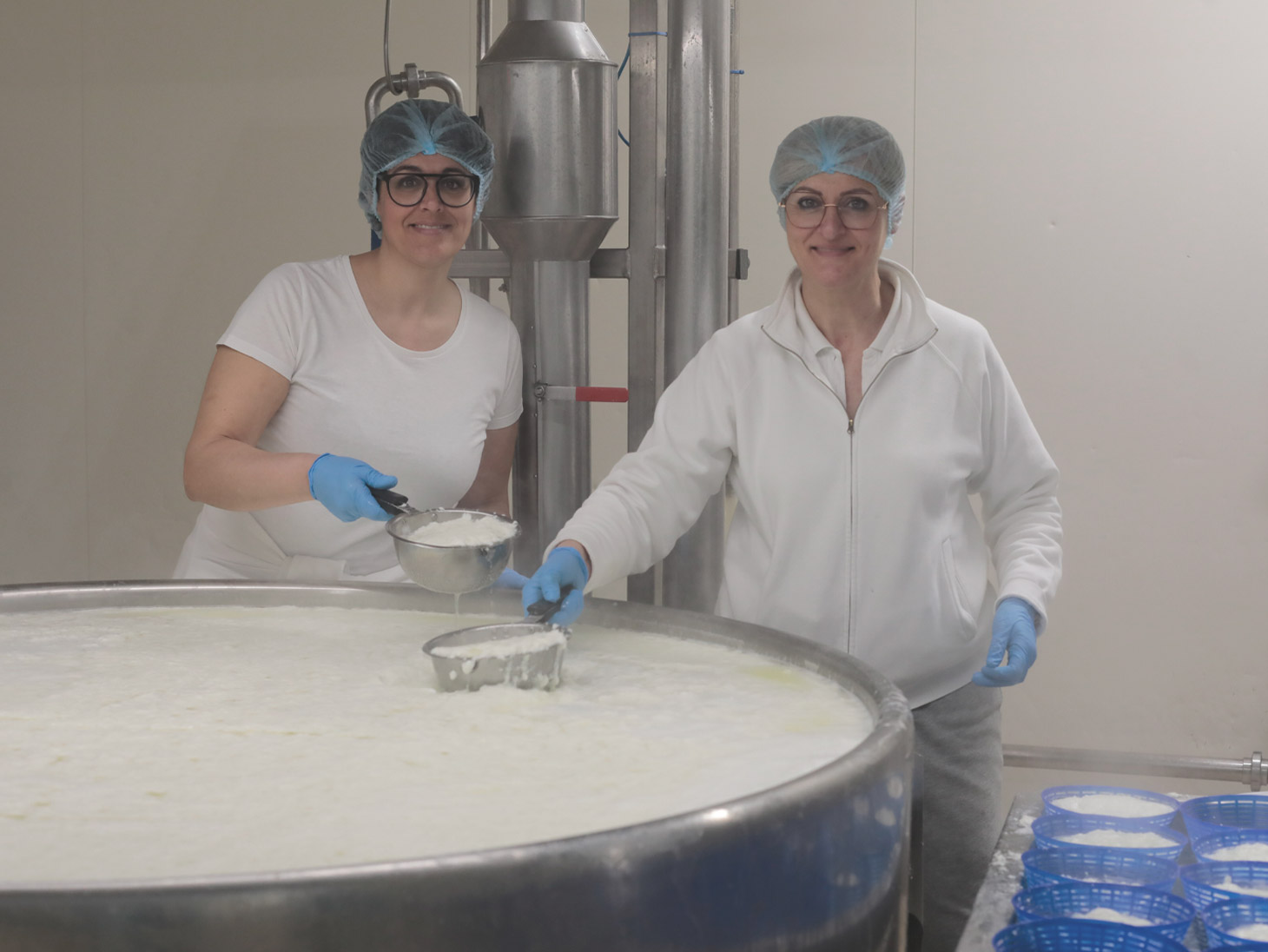
We start the visit with the production of Ricotta di Romagna, the archetype of the Mambelli family cheeses: "It is precisely with Ricotta that the story of this company began - Raffaella tells us - in a country house near the current dairy, after the World War II. A small stable for family needs, a chicken coop, our grandfather in the fields, the scent of hot milk on the wood-burning stove that grandmother Elsa made to flocculate by simply adding thermal water taken from the nearby Fratta spring, naturally rich of mineral salts.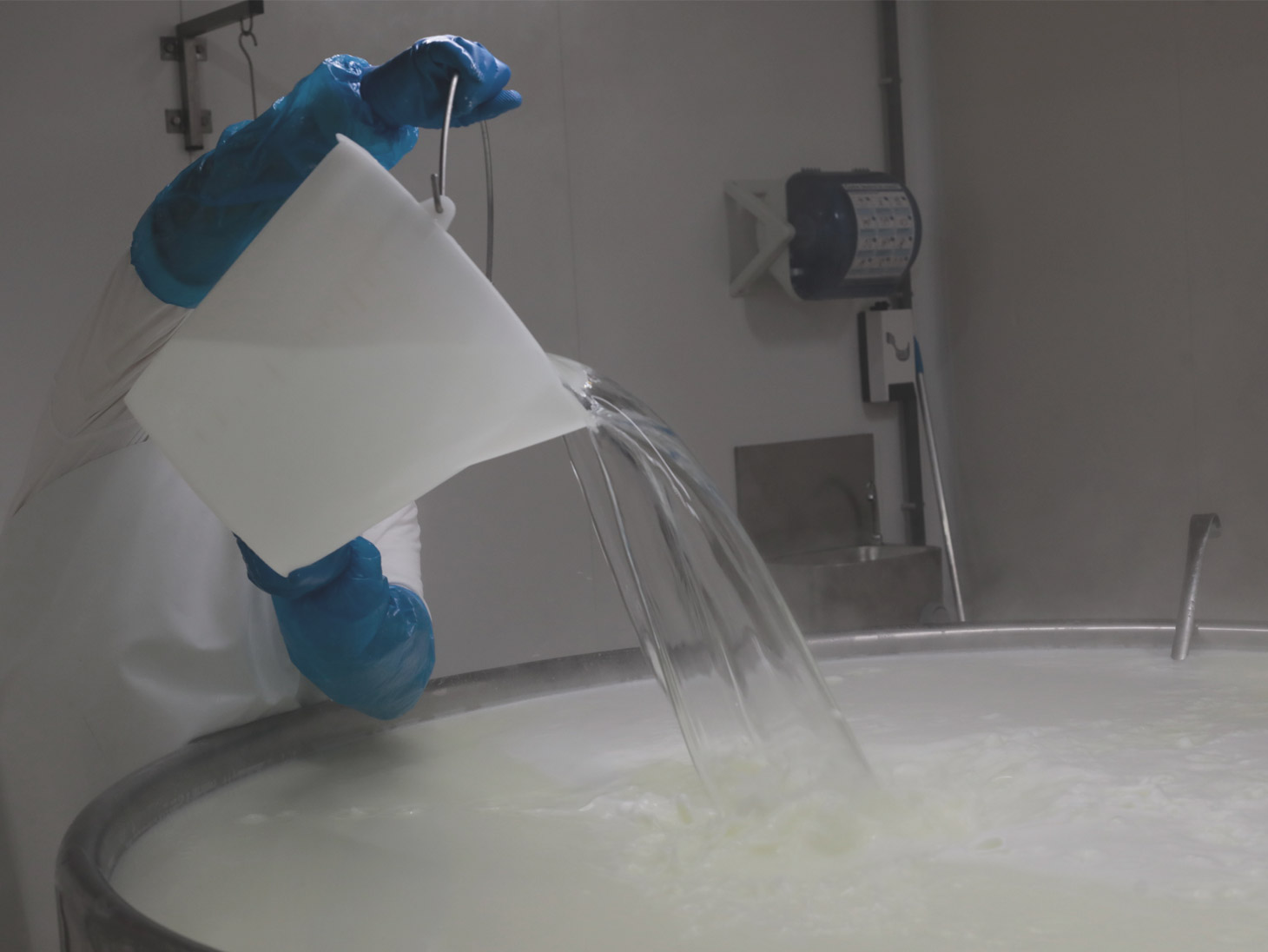
Only milk, not whey, because Ricotta di Romagna is obtained exclusively from whole milk - not from whey with the addition of milk, as happens for most ricottas - which gives it a particularly soft texture and a rich, intense, very sweet taste.
At the beginning, my grandmother used to prepare it just for the family, but it was so good that she slowly started to produce it in ever greater quantities, at first for friends and acquaintances, but then also for sale: in the early days she took it herself to the market by bicycle, until my dad built ad hoc some wooden boxes to be able to transport it by motorcycle, with his Mondial. In those years, milk ricotta had become a well-known product in our area, and in Romagna it had almost supplanted whey ricotta". 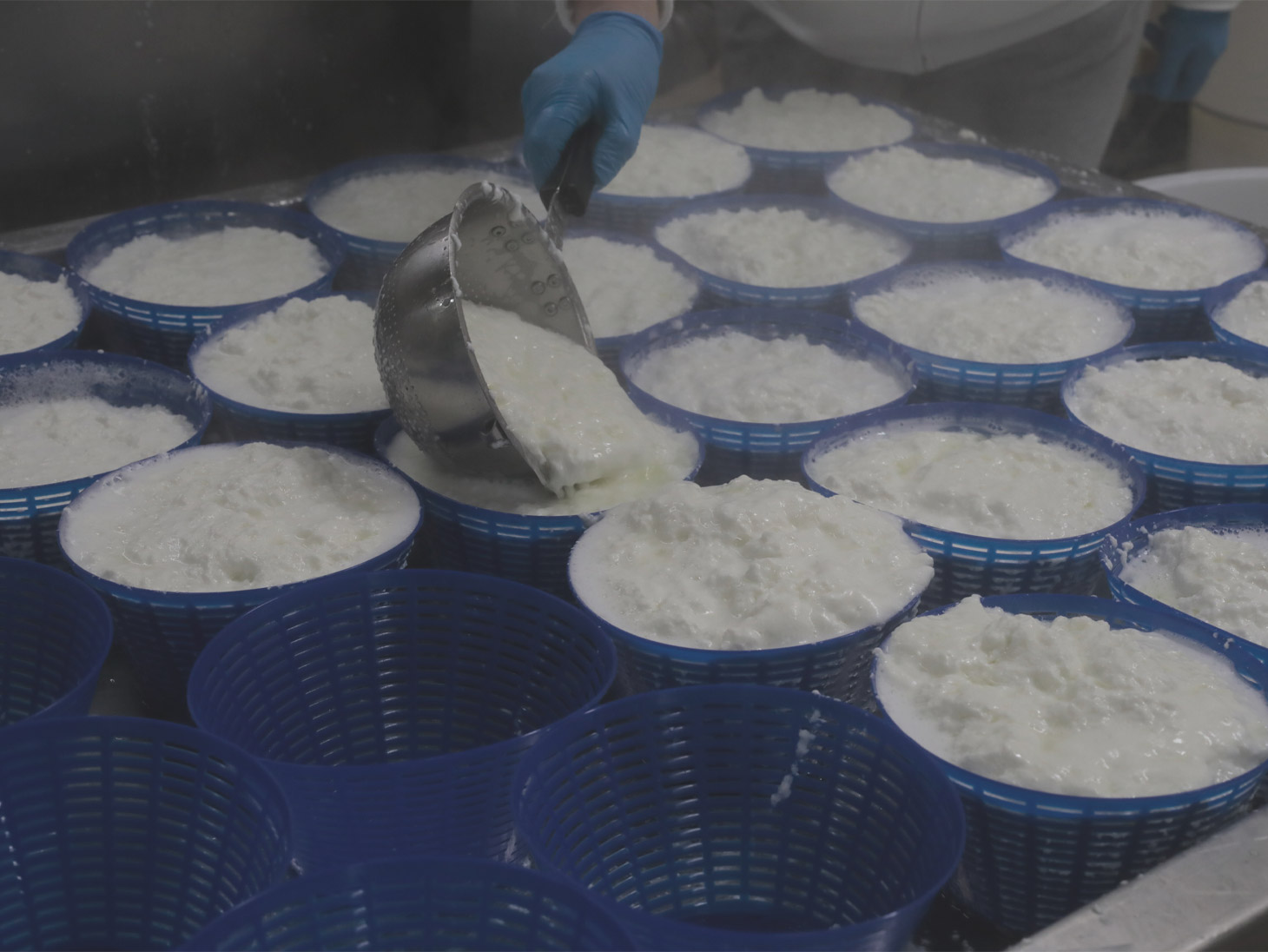
It is always fascinating to see the production of ricotta: the flakes gently collected by hand with a strainer from the steaming cauldron. Let's start taking some pictures of the two sisters, "in the witches' den" Federica suggests laughing. We follow the making of Ricotta di Romagna a couple of times, it follows a continuous cycle: the milk is brought to 94°C, then a solution of Cervia salt and thermal water is added, previously filtered to eliminate any impurities from the integral salt. 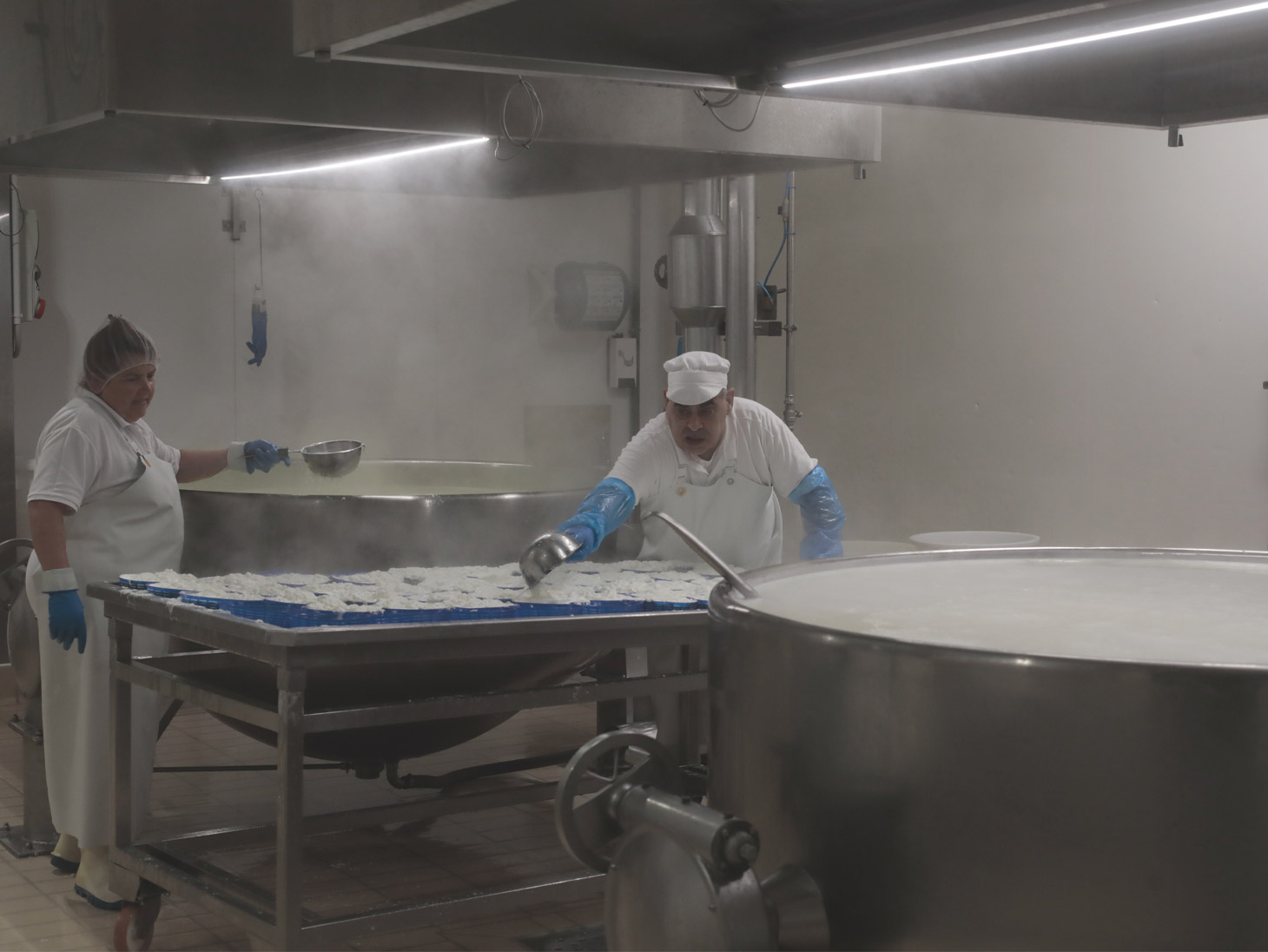
The addition of this solution causes the milk to curdle and the flakes to rise, which are extracted by hand with strainers and placed in the baskets. The first flakes, the softest ones, are placed in small heart-shaped molds and will become "I love ricotta", the little heart-shaped ricottas that we already know very well. As the ricotta "cooks", the flakes lose moisture and remain in shape even when placed in larger baskets, releasing less whey once packaged: for this reason, this second part of the process is addressed to the production of Ricotta di Romagna, in the classic 1,8 kg basket.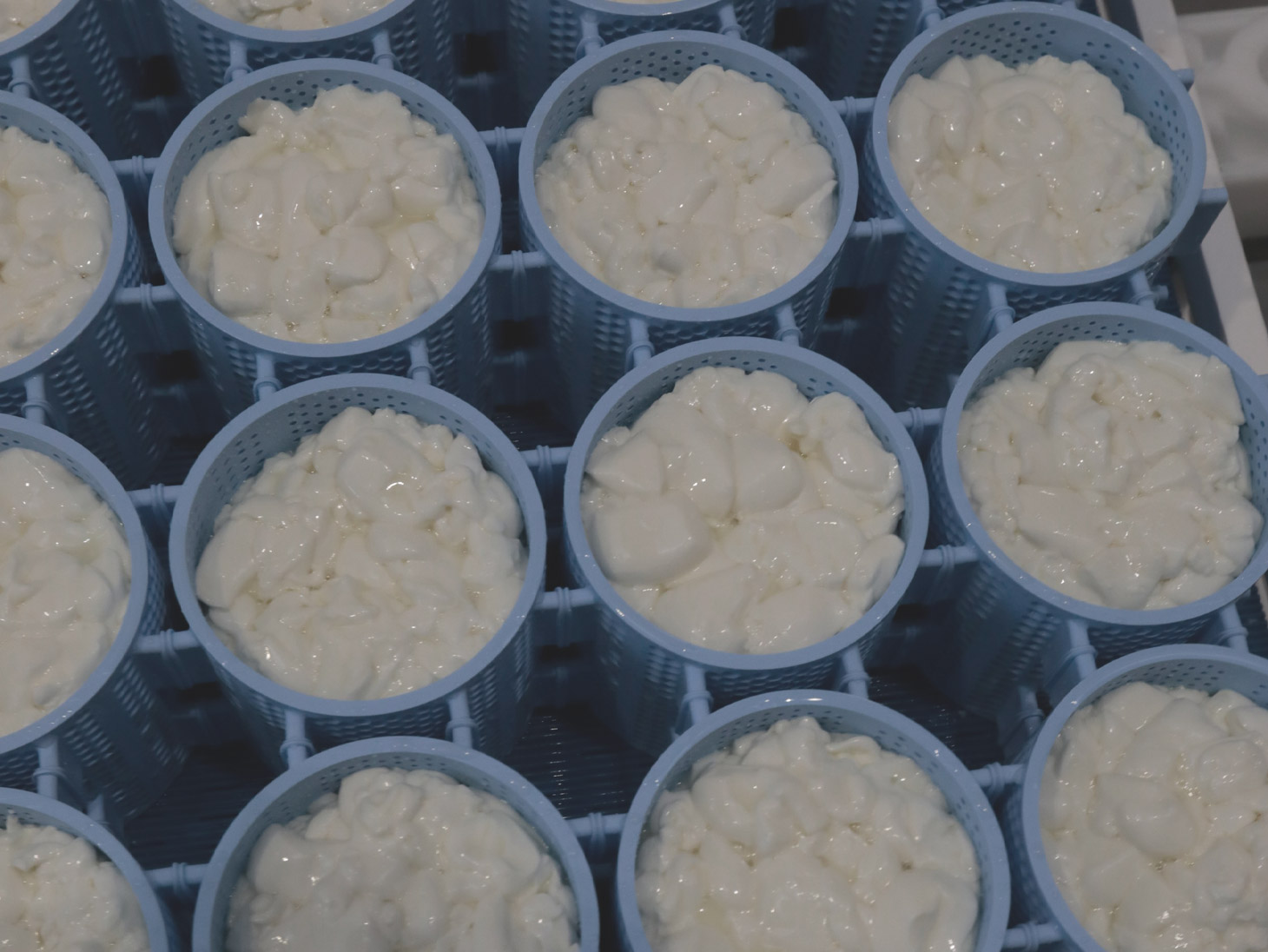
We can say it is the "older sister" of "I love ricotta", still a milk-ricotta, but of a larger dimension: both are produced from a single process, just in subsequent phases. The very sweet taste of the milk is immediately recognizable, the difference is above all in the texture, a little more compact, but still very homogeneous and smooth, never grainy as sometimes happens with whey ricotta. 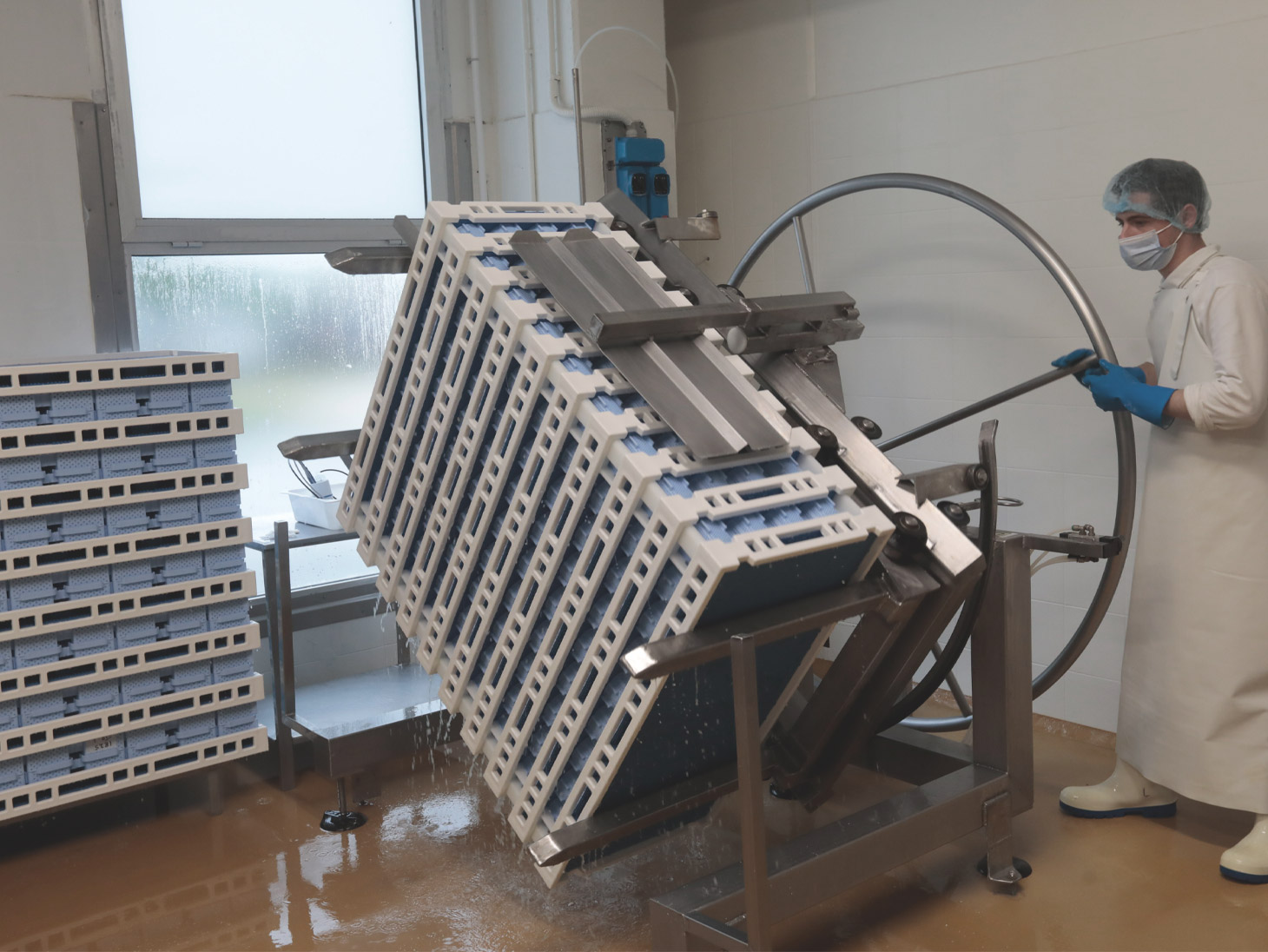
We move to the main room of the dairy, to see the production of Squacquerone di Romagna DOP: closed boilers, an important mechanization. “It almost looks like an industrial process”, I venture. Raffaella glares at me: "Absolutely not, our recipes are still the artisanal ones. The dairy was built not far from the family farmhouse, in 1972. First in 1985 and then in 2017 extensions were made, with a new block of cells and the current packaging area, to allow better cooling of the cheeses and a correct handling cycle.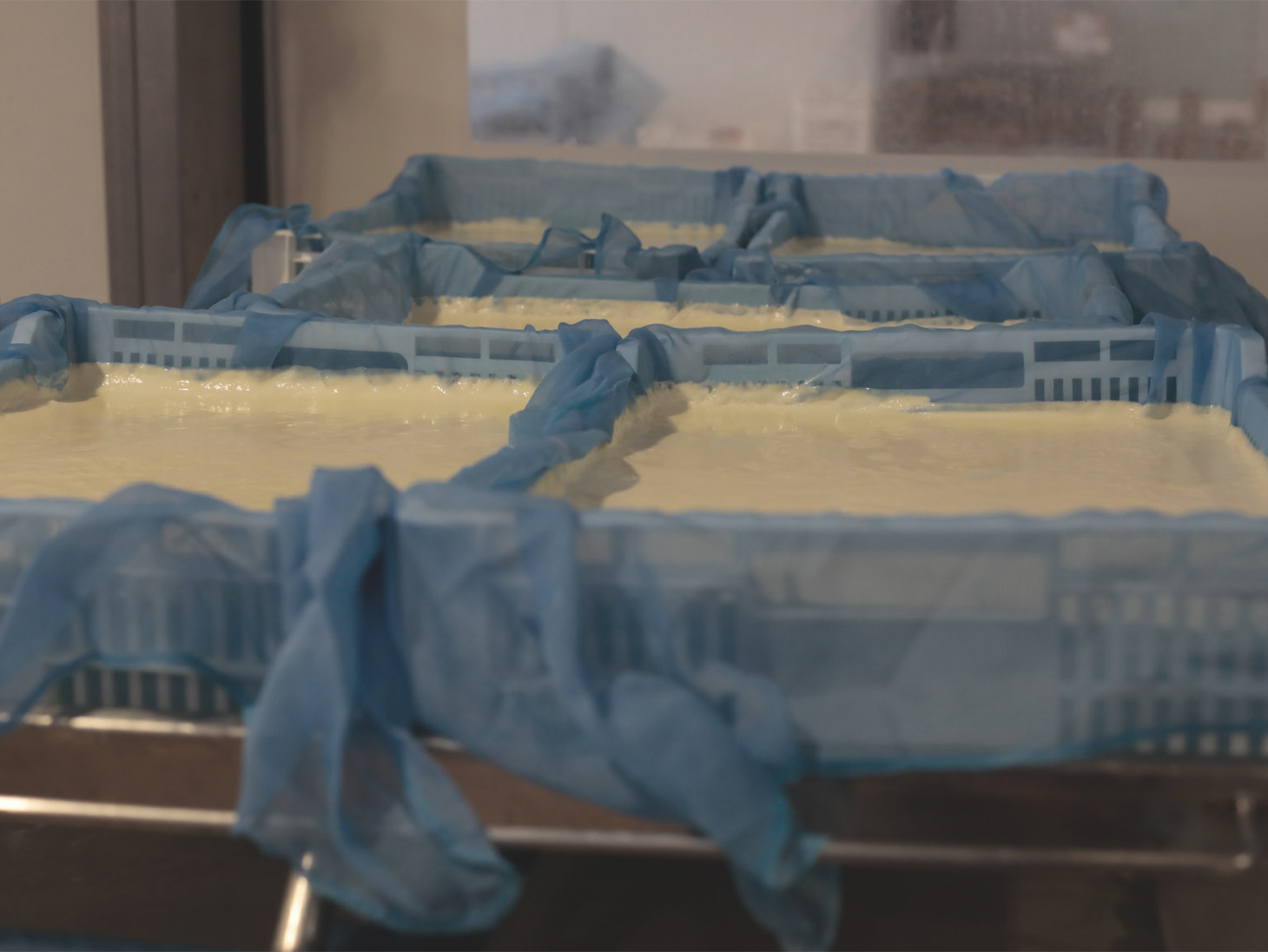
The latest renovation works have been very recent, in June 2022, when the new cheese production plant was added. Over the years there has been an important modernization in some phases for two reasons: to guarantee food safety and to lighten the work of our collaborators, but the processing is still today very artisanal.
The difference between ours and the industrial fresh cheeses is that there are no standard recipes, every day the processing is adapted to the characteristics of the milk: the coagulation times, the curd cutting times, the molding times are always different and decided time to time by the cheesemaker.
However, we must not forget that fresh cheeses require greater attention from the point of view of food safety. The closed vats ensure that the workers never come into contact with the curd, in order to reduce the risk of contamination. In packaging, all the staff wear surgical masks, precisely to ensure the wholesomeness of the product. Furthermore, automation helped also to achieve more uniformity in cheese shaping. 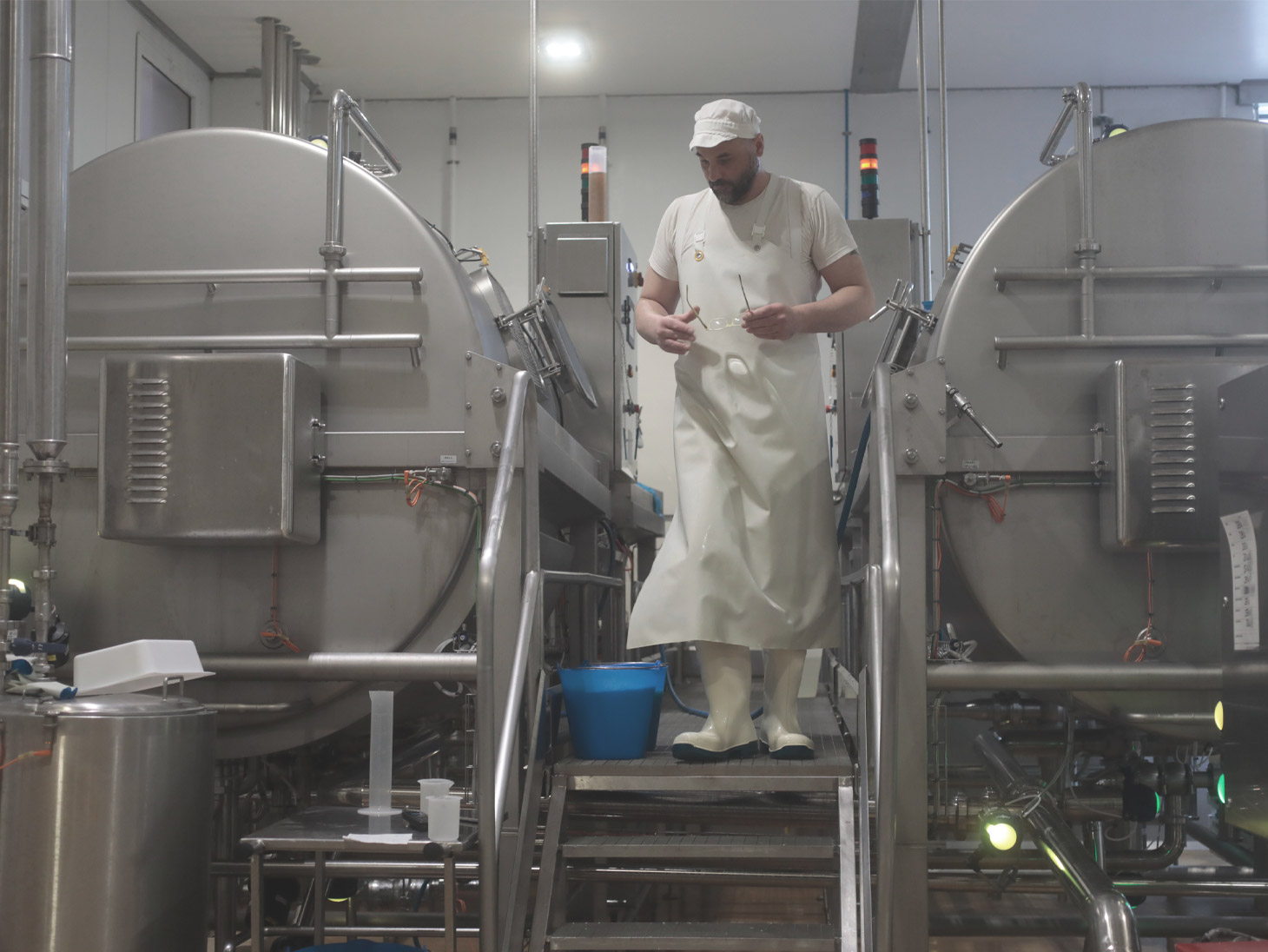
But let's take a step back. The milk arrives at the dairy every morning, partly purchased directly from neighboring stables, partly from a collection center, to be able to manage seasonal peaks, which are quite significant for fresh cheeses.
We process about 300 quintals of milk a day, 60% of which for the production of Squacquerone di Romagna DOP. The milk is analyzed in the afternoon, to check the fat and protein content, and processed the following day. After pasteurisation, it is brought to 40°C, the starters and then the salt are added – in is salted in curd, not in brine – and finally the rennet. The curd rests for a maximum of 30 minutes, before being cut into walnut shapes; a further rest follows until the curd reaches the correct acidity and finally it is stirred to untie "the cubes" and let them purge, in order to obtain the right humidity of the coagulum before shaping. 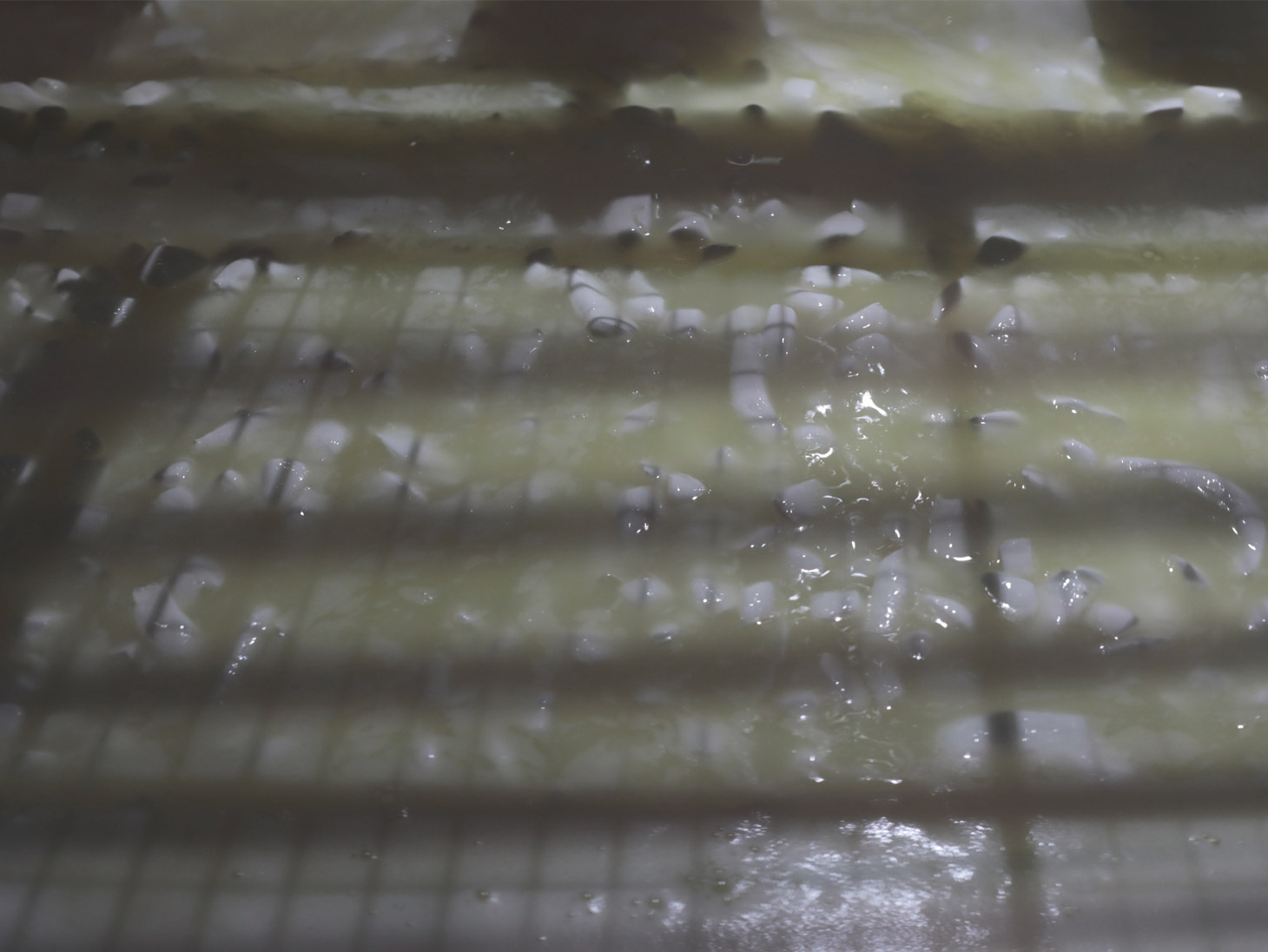
When the cheesemaker decides that the consistency of the curd is correct, it is poured into a forming machine and transported on rollers with holes where it is then accompanied by gravity to fill the baskets that slide on the rollers below. The baskets with the molds are stacked and turned over, again with the help of a machine, every 30-40 minutes, to favor drainage and make the humidity uniform inside each mould. The cheese remains then at room temperature until it reaches the correct pH to be moved to the cells, where it matures at least one day before packaging".
We didn't manage to see the making of Mascarpone, we found it arealdy in the crates, wrapped in clothes to drain; it remains there for a few hours before being hung in the cells, in many bundles made with the same clothes, to continue draining the whey until the next morning, when it will be hand-packed in loaves. 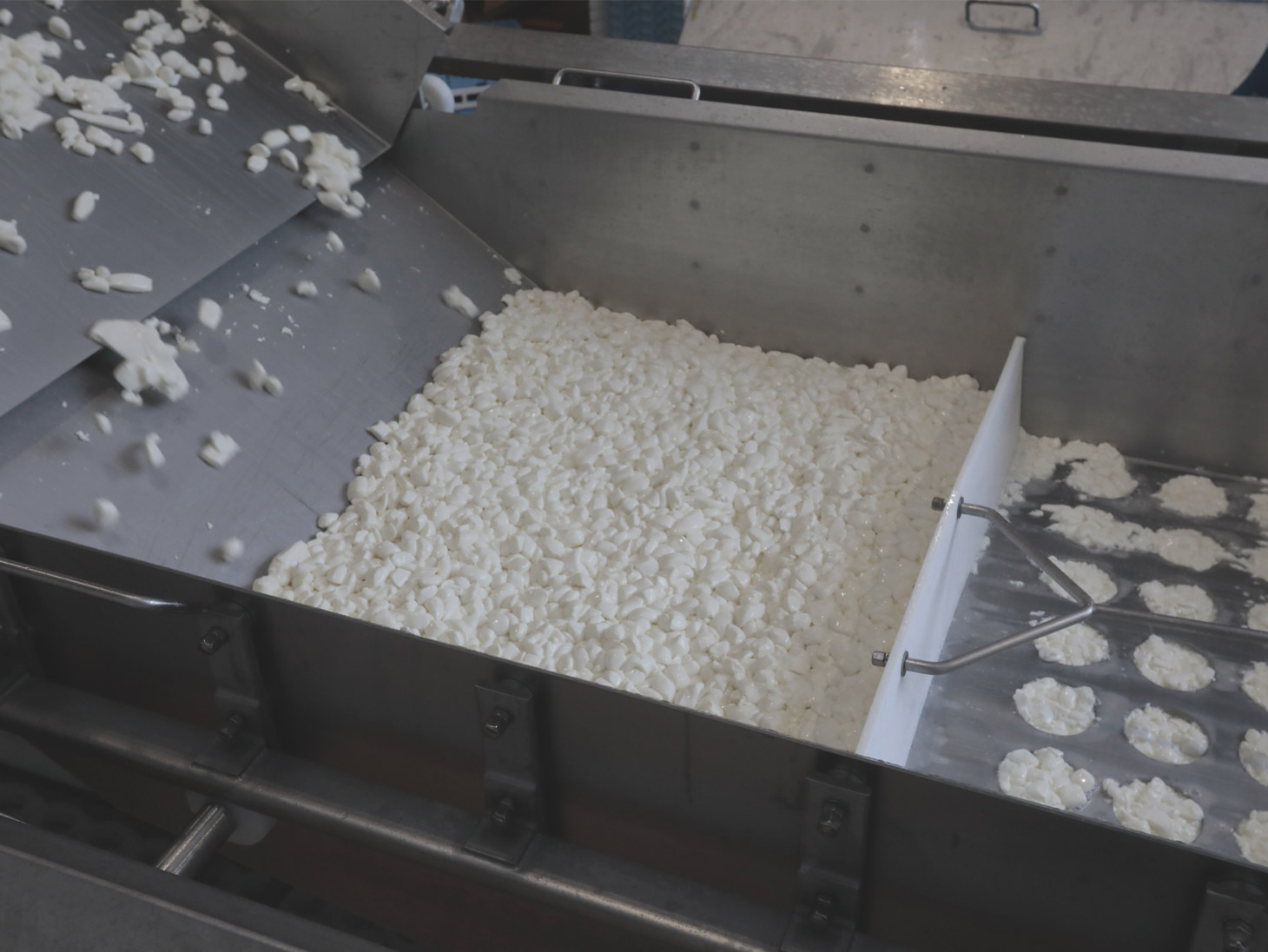
A large part of the packaging is still today done by hand: Mascarpone but also Squacquerone di Romagna DOP itself are wrapped by hand, before passing into the machine that seals them with the modified atmosphere. And here, in the packaging department, we meet Mattia, Raffaella's son, the fourth generation of the company. He started to work his way up a few months ago: after his studies, he decided to join the family company, starting from production, to get to know the processes first and foremost, and then... who knows. Raffaella's smile widens, we can feel that she is happy with Mattia's choice: the link with the family business is deep and solid, thanks to the chemistry with Federica but also with Gianluca, Raffaella's husband: today we couldn't meet him, is offsite, but he too is a fundamental pillar of the company, beeing in charge of key customers, logistics, marketing. 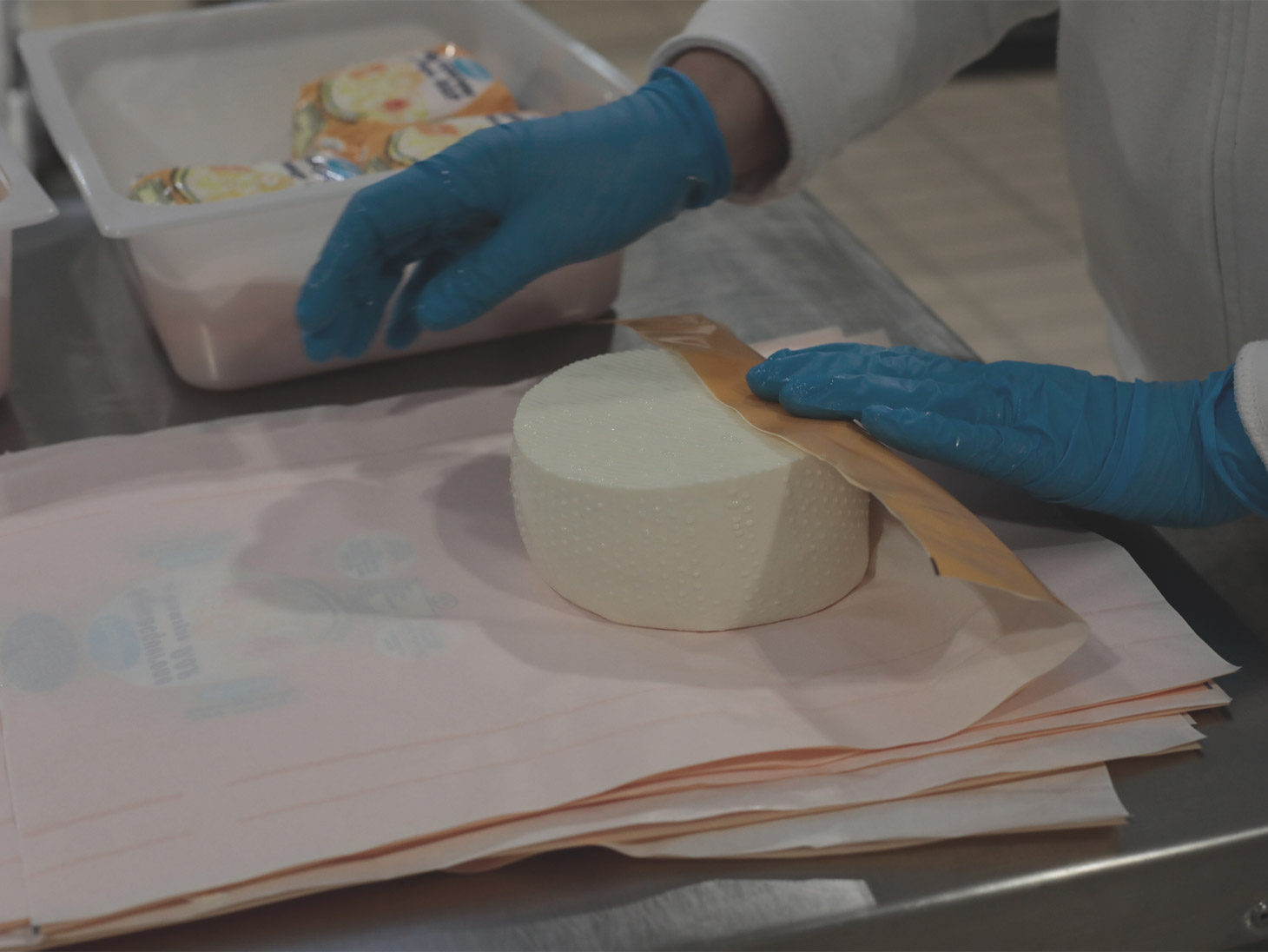
We have finished our tour, we return to the office to say goodbye. Domenico's Mondial winks at me from the corner where it is displayed and I can't hold back the proposal that had already flashed through my mind since I arrived: I ask the two sisters to get on for a photo. They look at me puzzled and I think I've made my usual gaffe, but then a gleam of amusement lights up in their eyes: "Nobody ever asked us that, but why not?" 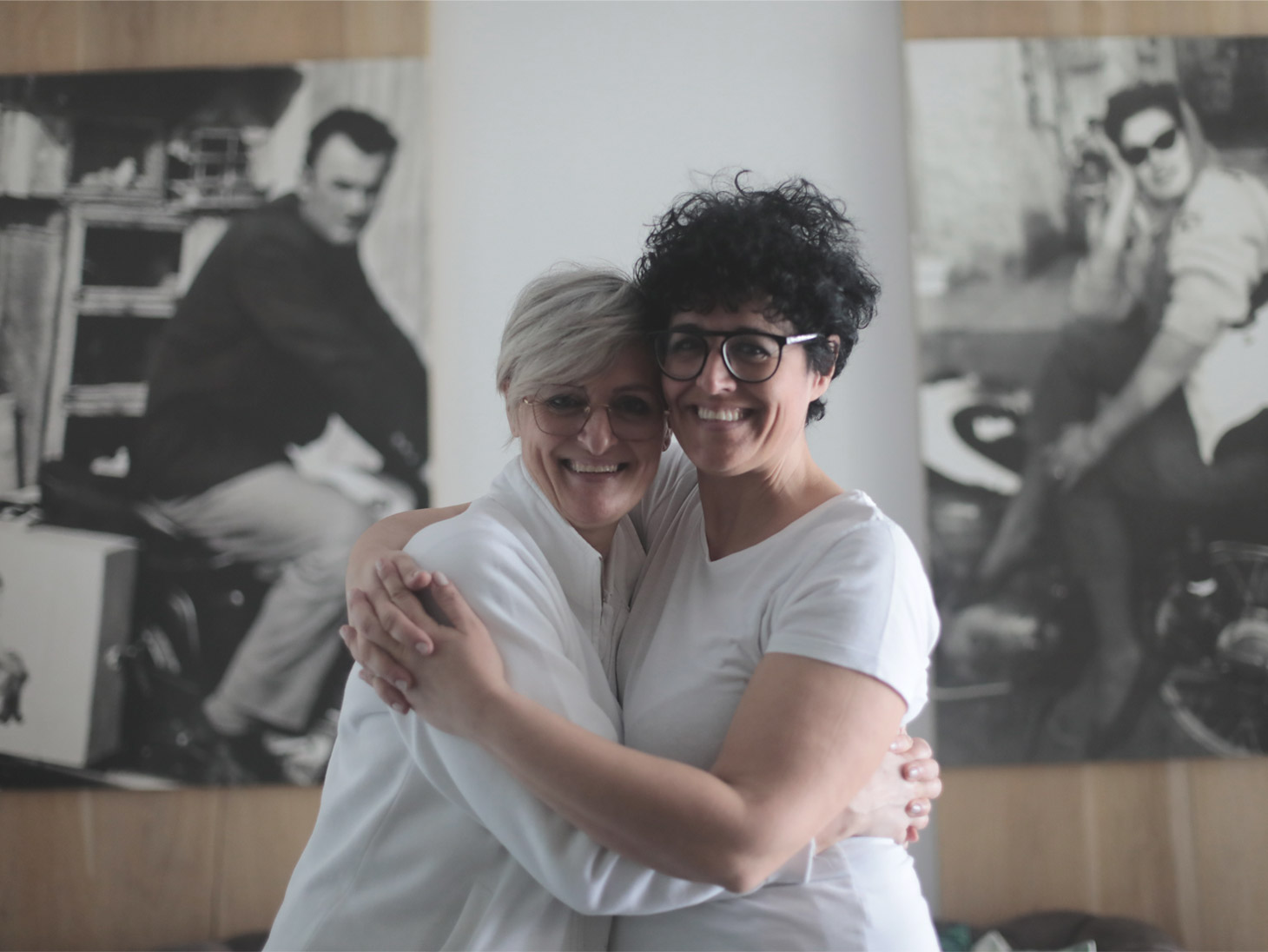
In a few minutes the whole office is involved, laughing, in the challange of getting them on the motorbike, with Raffaella driving and Federica behind, between the boxes for ricotta cheese, her legs crossed in the style of a 1950s' lady. If it was worth it's up to you to say, we had fun indeed! 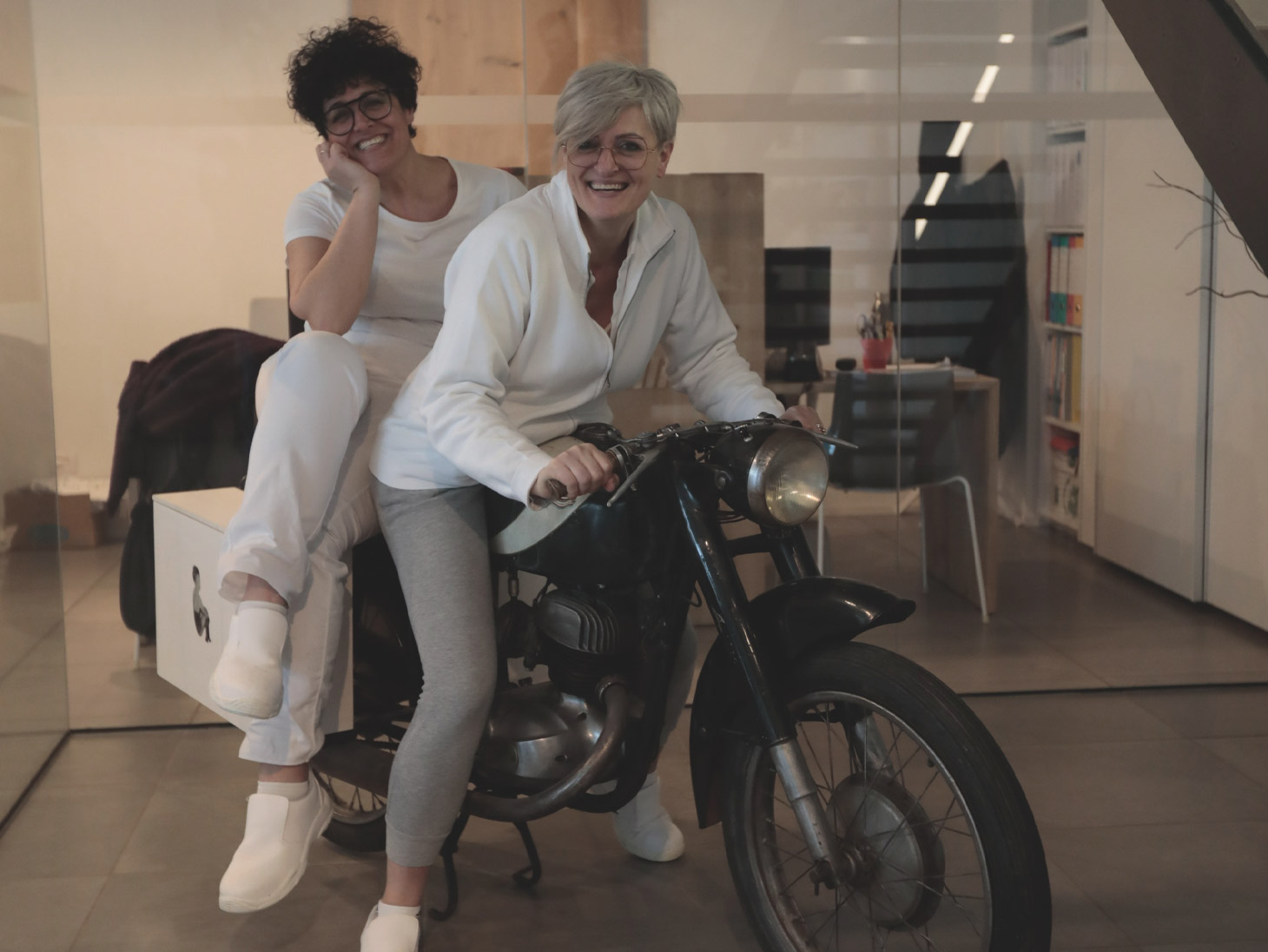
Martina Iseppon
Marketing Director







